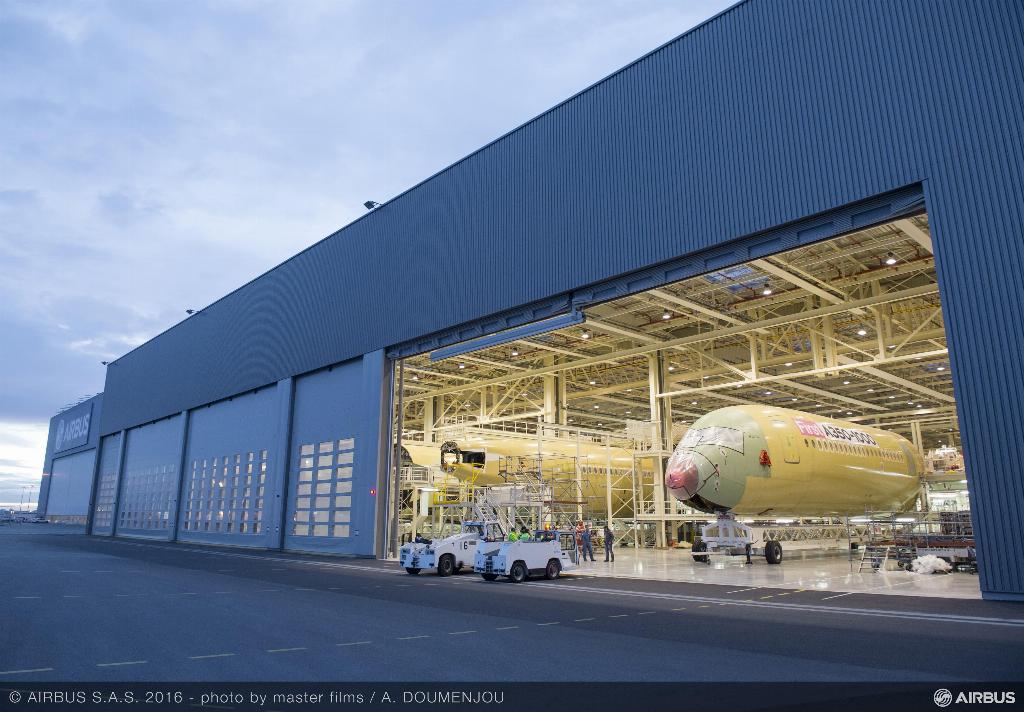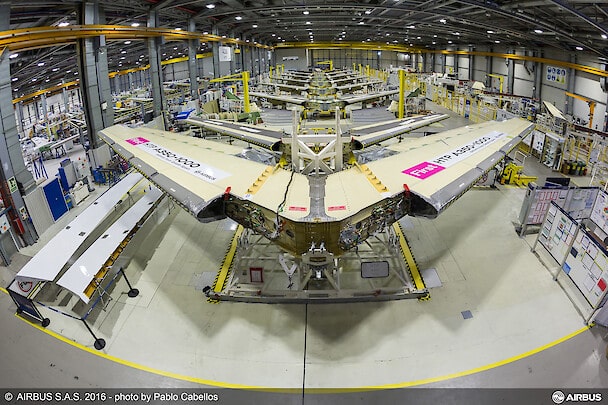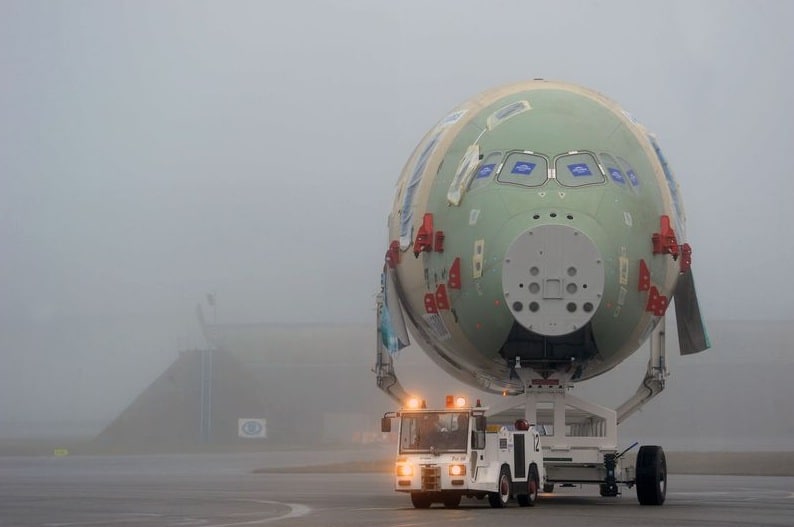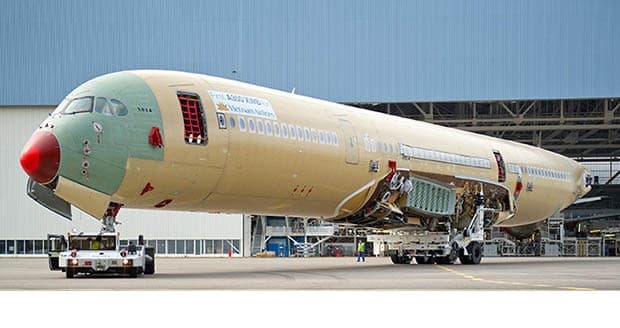Aerospace
How Airplanes are made ? Airbus A350 Aircraft Construction process.
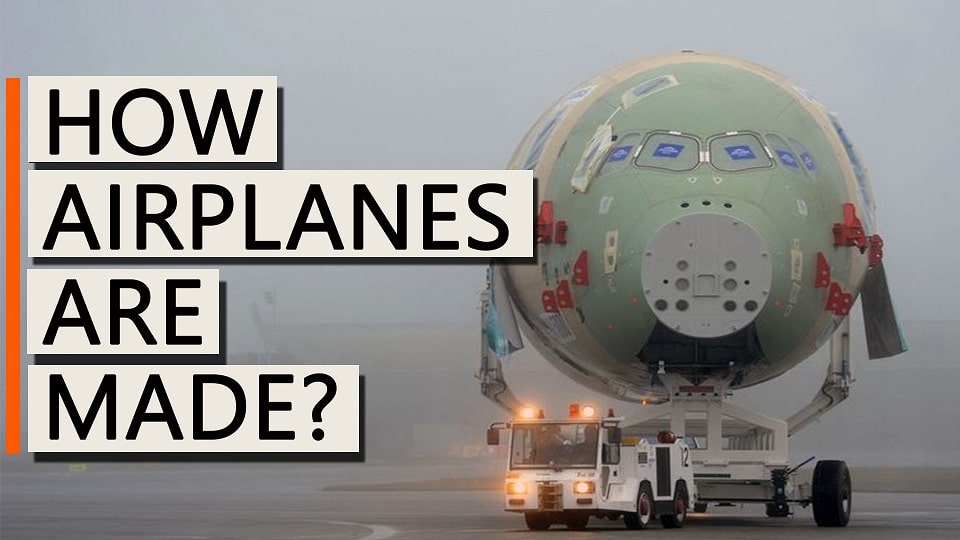
The aeroplane is such a wonderful machine for getting us from one point to another. It also allows us to enjoy the view of the city from above the sky while saving us valuable time. You surely have wondered at some point how these aeroplanes are constructed and what the underlying science is, therefore we will cover that in the video. Let’s get start
How do the LCH and Dhruv Helicopter Surveillance Cameras function?(Opens in a new browser tab)
Making an aircraft requires a lot of science and engineering, thus it is not a simple task. For the first time, the Wright brothers took to the skies. It made its maiden flight over Kitty Hawk, North Carolina, on December 17, 1903, with Orville in charge of the controls. Later, aviation technology advanced more and more. There are several companies that manufacture aircraft today, and they differ based on the needs of the clients.
One of the most cutting-edge aeroplanes currently in production, the Airbus A350, will be covered in this article. This wide-body aircraft can be used for longer journeys and has a carrying capacity of more than 350 passengers. This plane has a 19-hour flight range.
What is special about the Airbus A350?
A lot of engineering is needed to produce such aeroplanes, and Airbus conducts all of the work in various parts of Europe. In the initial stage company analyses market demands to develop the aircraft, A team of engineers will construct the aircraft and subject it to rigorous testing. Three aeroplanes will be produced initially, and they will be put through rigorous testing.
Where do Airbus get their parts from? (Logistics)
Beluga, is an unusual cargo plane designed by Airbus that resembles a fish and transports all the necessary components to the assembly site a few parts, such as engines and other heavy objects, have also been found in water and on roads. Manufacturing relies heavily on logistics to keep production moving along and complete tasks on schedule.
What is the A350 fuselage made of? (Fuselage Assembly)
It is one of the primary sections of the aeroplane and houses all of its parts, including the area where passengers are transported. Final Assembly Lines (FALs) for Airbus is located in Toulouse, France. where everything comes together and combines at this point. Airlines can operate more efficiently and with fewer carbon emissions thanks to the A350’s 53% composite material content. The A350 XWB is the first airbus to haveits wing structures and fuselage made of carbon-fibre reinforced plastic. The fuselage is often divided into three main segments: the front, the rear, and the middle, where it is connected together with the aid of the rivets, which firmly hold this component. As you can see in this video, the fuselage of the aircraft comes together and becomes its shape.
Does the A350 have composite wings? (Wing assembly)
Even if the engine fails, the wings are still the second-most crucial component of the aeroplane since they aid in gliding and landing. This is a very important component, and Airbus tests many levels of wing construction before selecting the best and strongest one to use in the aeroplane. Wings support the left and right engines, as well as the gasoline inside. With the aid of flaps, they also assist in lifting the aircraft off the ground.
The lightweight carbon composites make up the majority of the A350 XWB’s wing, including its upper and lower covers. These are some of the largest carbon fibre single aviation parts ever manufactured, measuring 32 metres long by six metres wide.
Empennage or tail assembly.
The vertical tail of the aircraft aids in keeping it going forward in a single direction, and it also aids in turning the aircraft in any direction. The most important part of this aircraft is its wings and tail, without which it cannot be controlled. This section is operated by a fly-by-wire system that responds to commands from the captain.
Engine
The engine, which generates the amorphous thrust that propels the aeroplane forward, is the main component that really generates the forward motion. Typically, the aircraft manufacturer will select the engine based on the size and capacity requirements. Before deciding whether an engine is safe for operation, it will undergo a variety of tests, including running in various weather conditions for a number of hours. Airbus constantly ensures that aeroplanes are kept safe and swift because engine parts endurance is one of the toughest problems. The Rolls-Royce Trent XWB engine, installed by airbus in the A350, generates 431.5-kilo newton of thrust.
A350 Avionics
The nervous system of an aircraft is made up of avionics and instruments, which give the cockpit constant updates on the status of the aircraft and its systems. Further cockpit developments are crucial because the cockpit serves as the primary control centre for an aircraft. The majority of Airbus aeroplanes have a fly-by-wire technology, which uses electric actuators to control hydraulic controls to further reduce weight due to the aircraft’s small size. The cockpit instruments receive data from all the instruments that collect information from various sensors and ground communication devices. Pilot makes the necessary decisions for flying after considering all the information.
Indigo to add Boeing 777 wide body aircraft in its fleet.(Opens in a new browser tab)
Painting Section.
The airlines chose the painting in accordance with their brand identity, theme colours, and logo choice. however, the majority of aircraft are often painted white. The entire painting process takes place in a closed room with high ceilings. In order to protect the aircraft body from heat, two layers will be painted on it: a base layer and a primary layer. Additionally, a designer will create the airline’s logo and name, which will be carefully painted on the aircraft.
Interior of cabins
The primary airline signature style is found in the cabin interior. Long-haul flights typically use the A350, and in order to maximise passenger comfort, airlines luxuriously furnish the cabin and offer the nicest seats available. After the customer’s choice is made, some vendors who work in tandem with the Airbus firm construct demo examples for the client. Interiors of the cabins’ seats will be created. Airlines often have two primary sections: a business class and a premium or economics class.
Test phase
After completing all necessary steps, the aircraft will be checked for taxing and many other functions before being handed over to the owner.
Tell us in the comments what component of the aircraft you find most interesting. Isn’t it remarkable how an aircraft is built? Thank you for watching; if you like it, please let others know.

Aerospace
Boeing Transfers Rocket Stage to NASA, Paving Way for Human Moon Mission

Boeing has achieved a significant milestone by providing NASA with the second core stage of the Space Launch System (SLS) rocket.
This crucial component, crafted at NASA’s Michoud Assembly Facility (MAF), is set to propel the Artemis II crew into lunar orbit, marking humanity’s return to deep space after a 50-year hiatus.
The monumental Boeing-built rocket stage, the largest element of the Artemis II mission, will embark on a journey aboard the Pegasus barge, traveling 900 miles to NASA’s Kennedy Space Center.
Comparison of two legendary aircraft B777x vs B747 aircraft:Click here
Upon arrival, it will be meticulously integrated with other essential Artemis II components, including the upper stage, solid rocket boosters, and NASA’s Orion spacecraft within the iconic Vehicle Assembly Building. This intricate integration process is a vital step toward the eagerly anticipated Artemis II launch, slated for 2025.
“Boeing-built products helped land humankind on the moon in 1969, and we’re proud to continue that legacy through the Artemis generation,” remarked Dave Dutcher, vice president and program manager for Boeing’s SLS program. “Together, with NASA and our industry partners and suppliers, we are building the world’s most capable rocket and paving the way to deep space through America’s rocket factory in New Orleans.”
NASA, Lockheed Martin Reveal X-59 Quiet Supersonic Aircraft:Click here
The delivery of Core Stage 2 marks a significant achievement in the evolution of the SLS rocket. Towering over 200 feet and powered by four RS-25 engines, this core stage, coupled with two solid-fueled booster rockets, will generate a staggering 8.8 million pounds of thrust. This immense power is crucial to launching Artemis II and future missions into the vast expanse of space.
The SLS rocket stands unparalleled in its capability to transport both crew and substantial cargo to the moon and beyond in a single launch. Its extraordinary capacity will facilitate the delivery of human-rated spacecraft, habitats, and scientific missions to destinations including the moon and Mars, ushering in a new era of space exploration.
-

 Travel1 week ago
Travel1 week agoAir India to Expand US Operations with Three New Routes After a Decade
-

 Travel2 weeks ago
Travel2 weeks agoWhy We Should Avoid These Stamps in a Passport
-

 Airlines1 month ago
Airlines1 month agoInvestigations Reveal Fake Chinese Titanium in Boeing and Airbus Jets
-

 Tech4 weeks ago
Tech4 weeks agoChina’s CATL Plans 1,800-Mile Electric Plane Launch by 2027
-

 Airport3 days ago
Airport3 days agoTop 10 Largest Airports in the World by Size
-

 Aerospace4 weeks ago
Aerospace4 weeks agoChina’s Fighter Jets Turn Wings into Autonomous Drones
-

 Airlines4 days ago
Airlines4 days agoAir India Rolls Out A350s for Delhi-New York JFK and Newark Routes
-

 Defence3 weeks ago
Defence3 weeks agoBoeing Enhances Chinook with New Engines and Block II Upgrades at $96 Million

